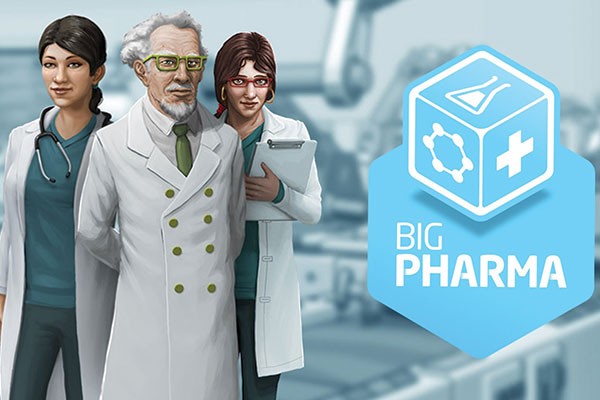Rating: 4/5
In an industry where saving people can make you a tidy profit, there have been many accusations of putting money before people’s lives. The Big Pharma conspiracy has always been a scary idea, and it isn’t helped by recent examples of corporations hiking up prices of life-saving medicine by 5000 percent. This makes the release of Twice Circled’s Big Pharma, which explores the idea of managing a pharmaceutical conglomerate, even more interesting. Part logistics puzzle, part management sim, Big Pharma will turn you into either a life saver or a rich monster.
The game plays in steps, with each step taking a day. Your basic machinery takes a day to process, with more advanced machinery taking longer, and your conveyor belts move product one tile at a time. You’re given an area with wall ports to either import ingredients or export completed remedies. Your goal is to increase or decrease the concentration value of an ingredient to activate its associated cure or negative side-effect. Machinery changes the concentration, with more advanced machines costing more but changing the value by a greater amount. This means basic machinery is more cost-effective but uses more space. Additional space can be purchased, but its cost increases substantially each time, so you have to balance out processing costs and the space used.
As cures and side-effects are randomly assigned at the start of every game, sometimes it’s impossible to avoid a side-effect. This can be mitigated by combining ingredients to cancel out certain effects, or by removing them through additional processing. Cures can be upgraded to more advanced forms in a similar fashion, with more valuable cures requiring more advanced machinery and additional ingredients. When you sell your cure, it is given a rating based on how well it works and how many side-effects it causes. Each cure and side-effect has a sweet spot in its concentration value that gives it more potency, with higher ranked cures being worth more. This doesn’t necessarily result in a more profitable cure compared to the production costs, giving you another aspect of production to balance. This all makes for an interesting logistics puzzle, with new strategies needed each time you play.
You have access to explorers and scientists as staff, who can look for new ingredients or research new machines and legal processes to help you get an upper hand in the market. If you don’t assign your staff to a project, they produce points that you can spend to make your ingredients and machines cheaper or more efficient. This becomes important as other companies compete against you and may produce the same cures as you but with a better rating or higher volumes, flooding the market and driving the price of your medicine down. You can combat this by making even better medicine, changing your product entirely, or even patenting your cures, forcing other companies to stop producing that particular product. Sometimes you can engineer a situation where you are the only producer of an important medicine such as “Treating Diabetes”, and you can drive the price up if your supply doesn’t meet demand. Other companies will do this to you as well, so it’s a moral choice, either to patent important medicine before other corporations do or risk being locked out.
The complexity of the game can drive away a lot of people in frustration; even the above mechanics are barely scratching the surface of the research options. It does take a lot of time and patience to balance production, space and costs. On harder difficulties (there are seven preset difficulties with five challenges associated with each, as well as a custom mode) it can be quite cut-throat as each corporation has a different playstyle, with one in particular trying to muscle everyone out of valuable cures. Still, if making a large conglomerate sounds appealing to you, then pick Big Pharma up and try to make the world, or your wallet, a better place.



